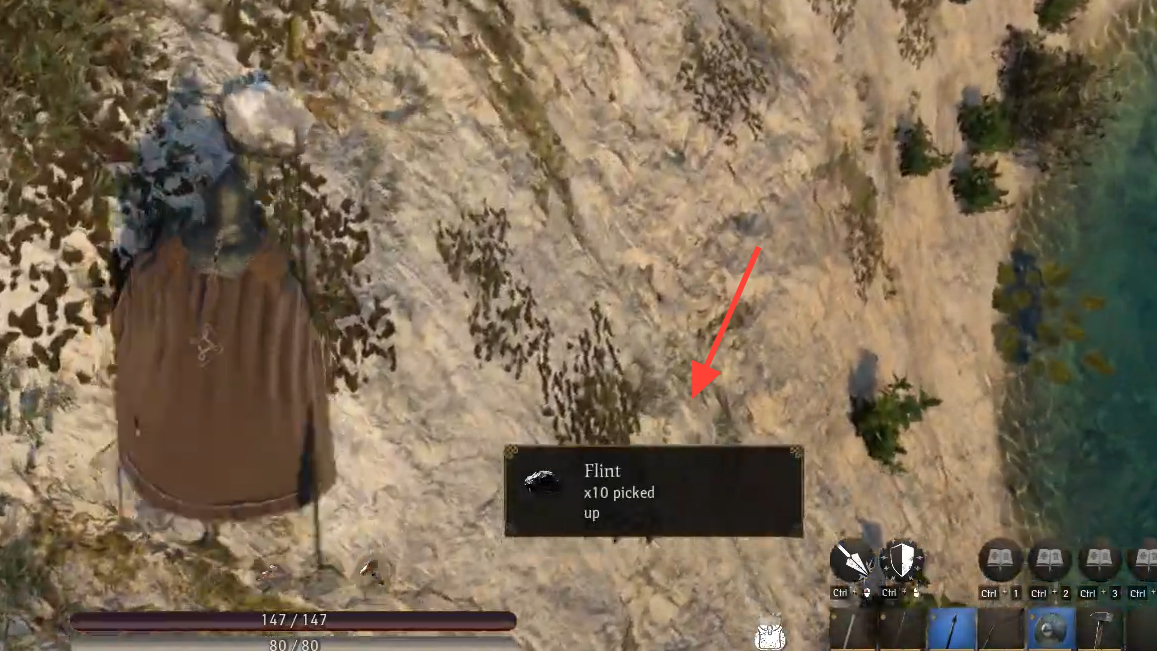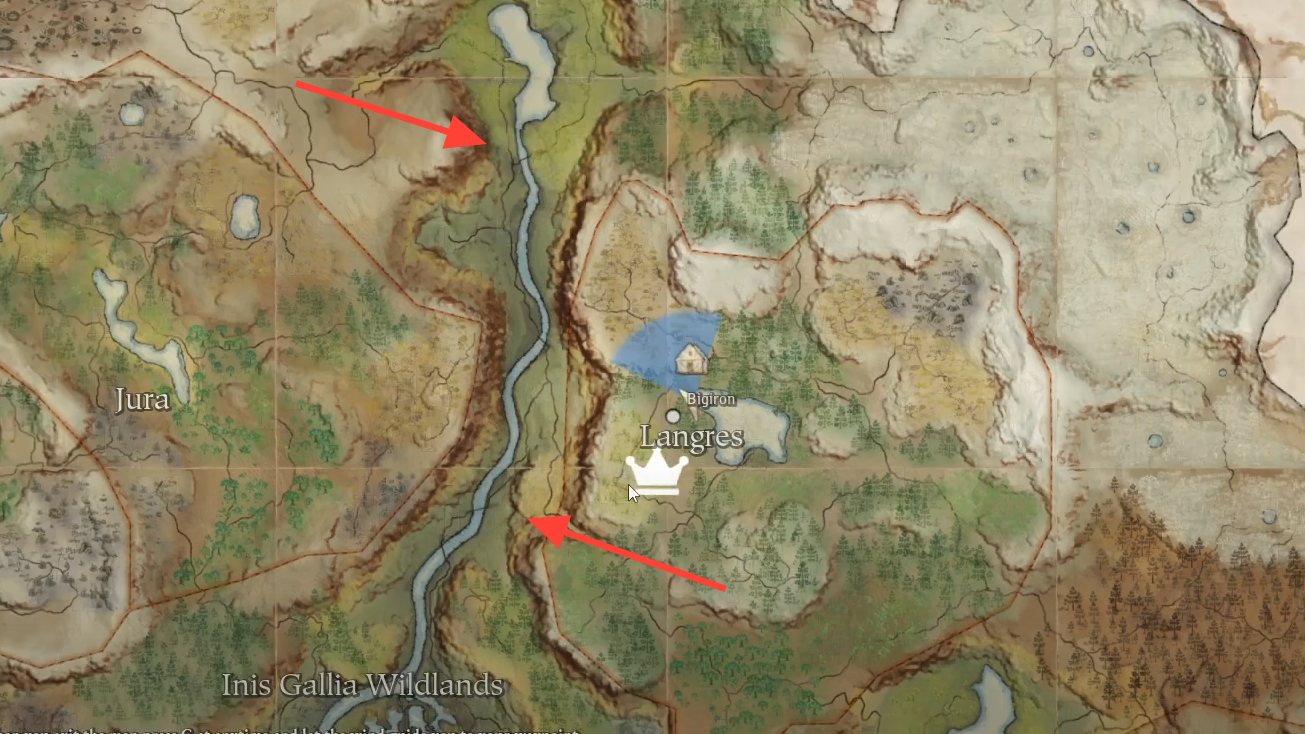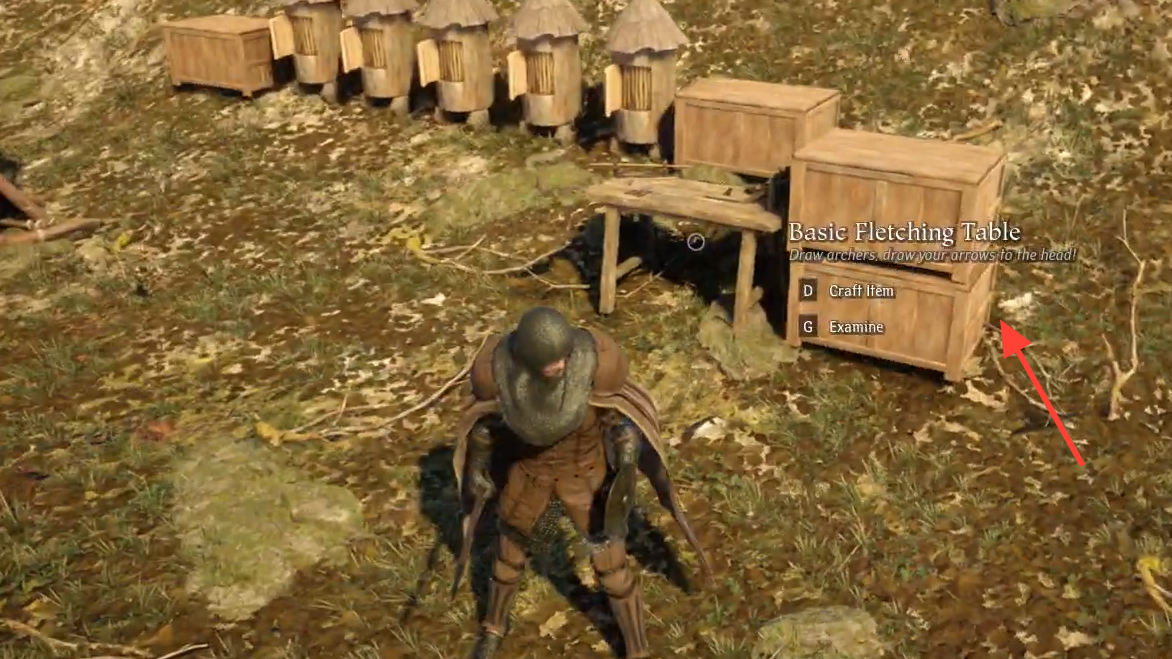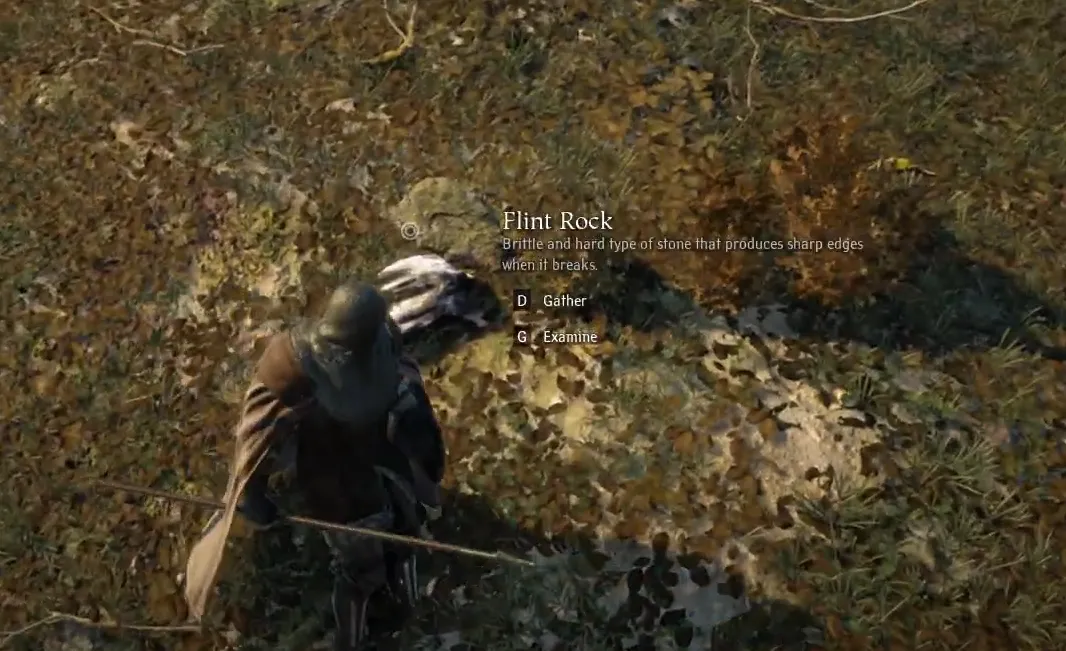Flint in Pax Dei is a small, dark gray rock that sits on the ground and stands out with a slightly sharper silhouette. You don’t need a pickaxe or any tool to collect it—walk up and press E. You’ll typically pick up one or two pieces per rock, and once you spot one, there are usually more nearby.
To avoid mixing it up with common stone like Gneiss, look for a subtle chalky or white-tinted coating on the top face. That visual cue is a reliable way to tell you’re looking at flint.
Where flint reliably spawns (and why rivers beat everything else)
The most consistent spawns are along riverbanks. Plan a short route from your current position to the nearest river, then sweep both sides of the bank. Ponds and small water bodies can also have flint, but long river stretches tend to produce the best clusters and fastest runs.
- Check forested stretches that touch the water. These areas often surface more flint clusters than open grassland.
- Scan the ground a few steps back from the waterline as well as the immediate edge; clusters can sit just off the bank.
- If you’re combing a busy region, push farther from high-traffic paths and player hubs. If others have just cleared it, you’ll come up empty until it respawns.
Flint respawns on a timer. If an otherwise good route is picked clean, rotate to a second river segment and return later.

Mountains: possible, but inconsistent
Flint can appear in mountainous regions, but those finds are spotty compared to river routes. If you’ve moved your base to a higher elevation and flint has dried up, treat mountains as opportunistic picks, not primary farming routes. When you need guaranteed results, head back to flowing water.
A quick loop that works
Open your map, chart a direct path to the closest river, and walk a tight shoreline loop that covers both banks before returning to your starting point. Once you know where clusters spawn on that segment, you can run the same loop in a few minutes and repeat after a respawn. If you keep striking out, shift your loop a zone or two away from major settlements and travel roads.

Carrying and stacking
Flint stacks in limited quantities, so plan around a cap and make quick drops at your base if you’re also hauling wood, hides, or ore. Because you only get a piece or two per pickup, cluster routes are key to filling a stack efficiently.
What to craft with flint
| Use | Why it matters early |
|---|---|
| Flinthead Arrows | Stronger than wooden arrows and a straightforward damage bump for hunting and early combat. |
| Basic Fletching Tools | Unlocks broader arrow and ranged crafting, letting you scale ammunition without constant vendor reliance. |
| Basic Cooking Tool | Supports essential food prep so you can stabilize healing and stamina with cooked recipes. |
| Basic Leatherworking Tools | Enables early hide processing and simple gear crafting, a staple for progression. |
If you’re just starting out, prioritize arrows and the tool benches that unlock more recipes; both multiply the value of each flint run.

Troubleshooting a dry map
- Nothing along your river? Move two or three segments away from common spawn areas and repeat your sweep.
- Found a single flint? Slow down and circle a 15–30 meter radius; clusters often sit just out of your initial line of sight.
- Still empty? Swap to a different river, run a short loop, then return to your first route after a cooldown.
Once you lock in a reliable river loop, flint stops being a bottleneck. Bank a few stacks while you’re there—early arrows and tool benches pay back immediately, and having spare flint on hand smooths every other crafting line you’ll touch in the first hours.


